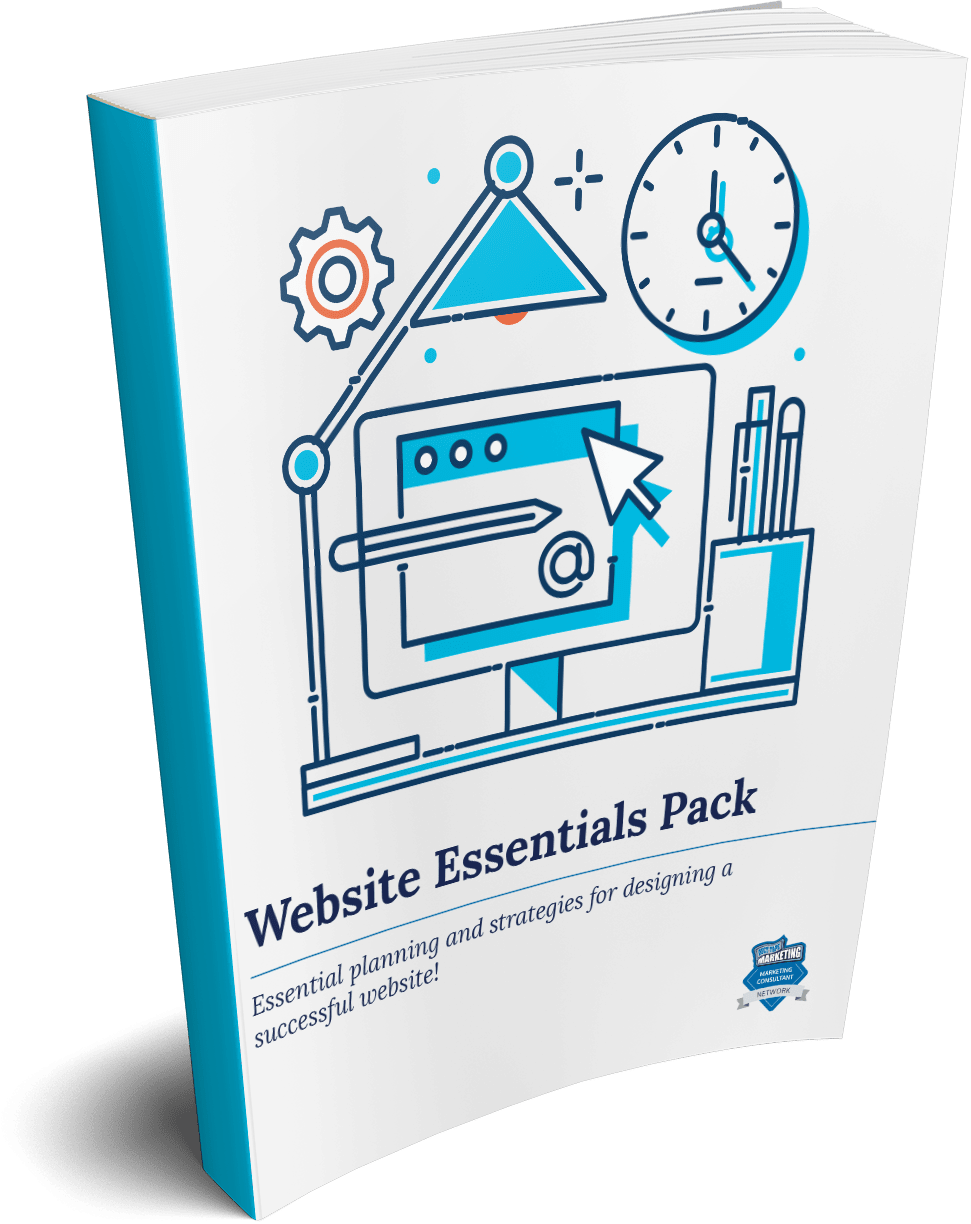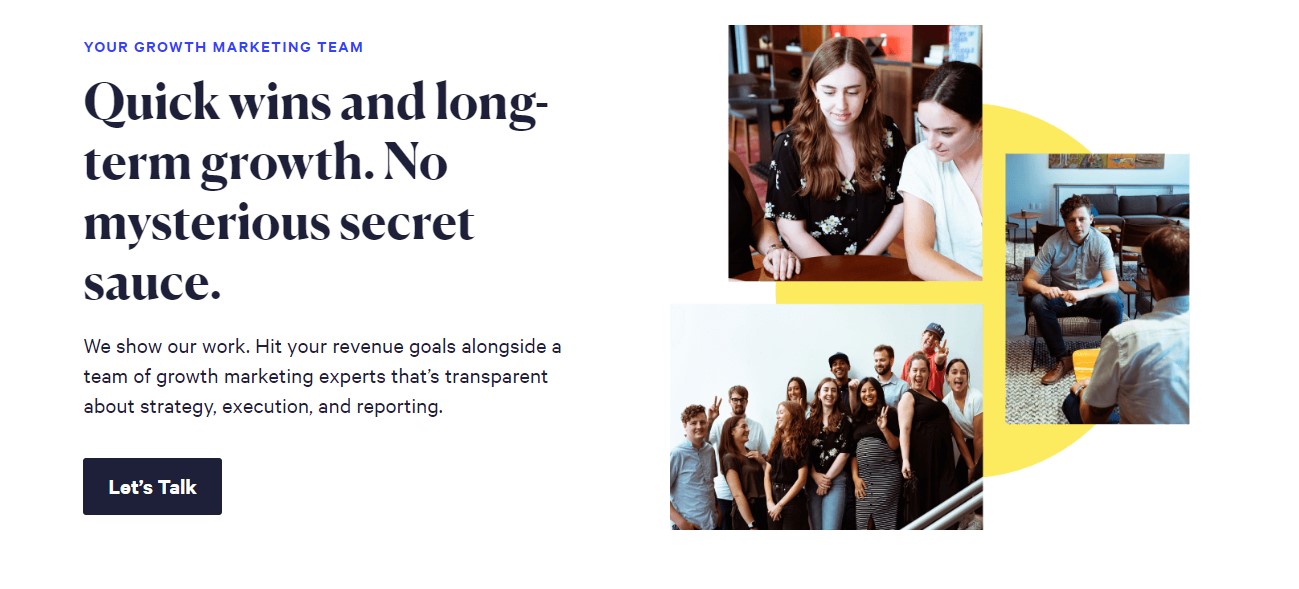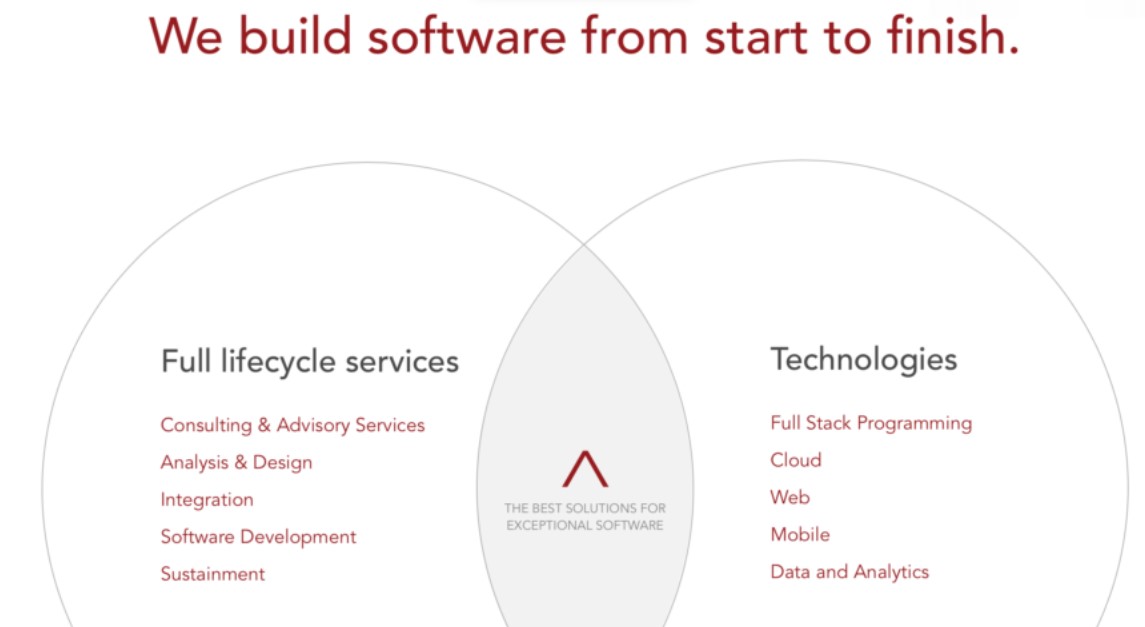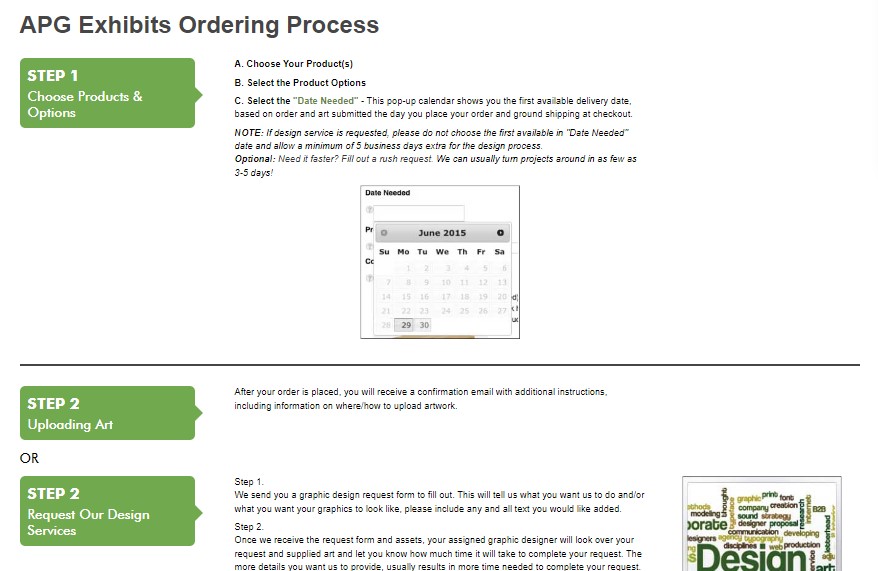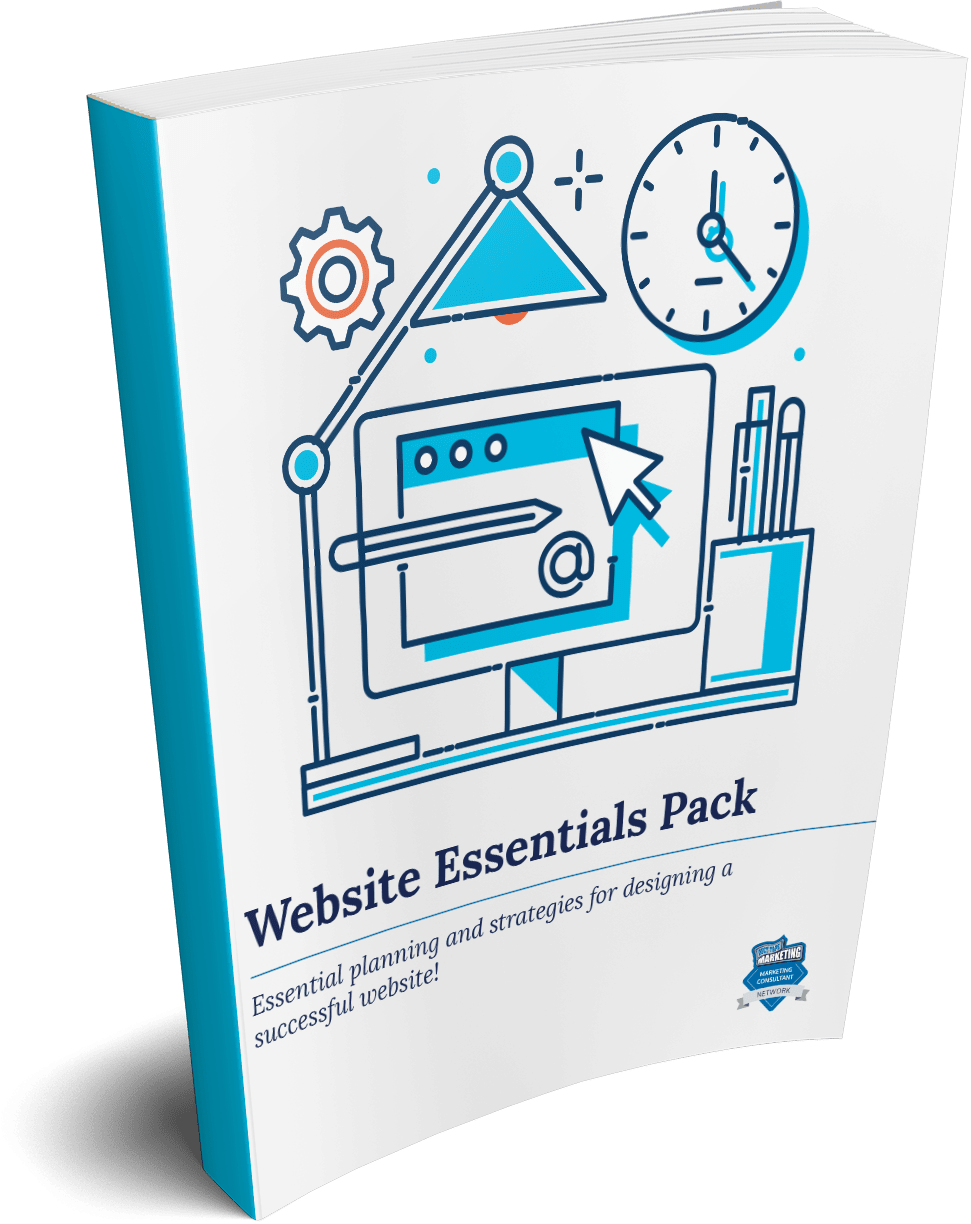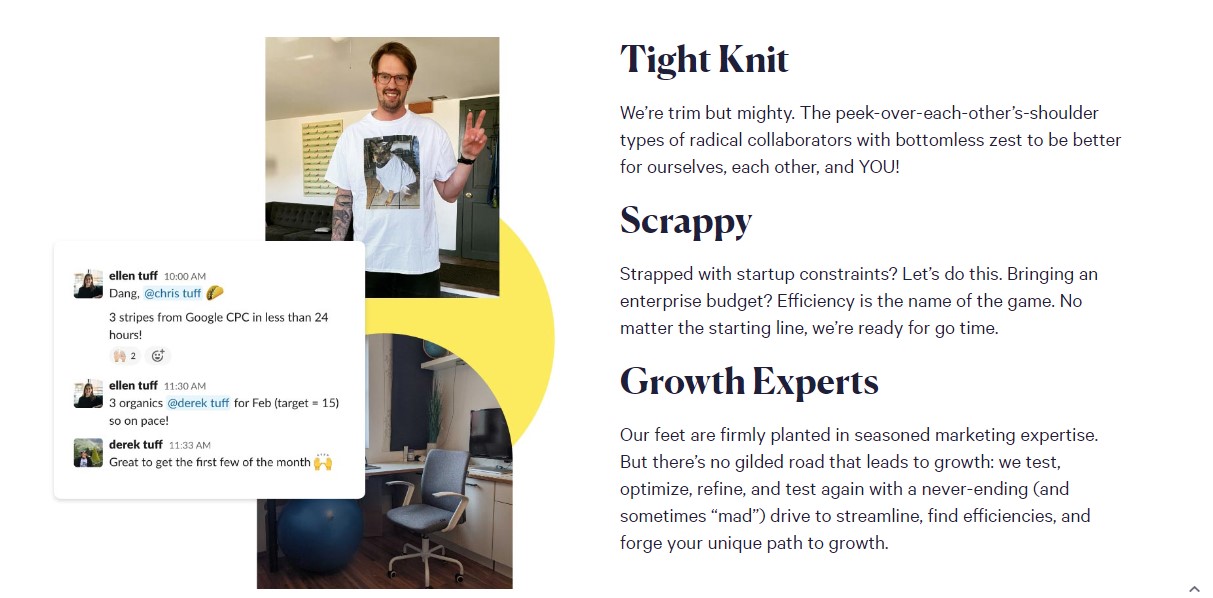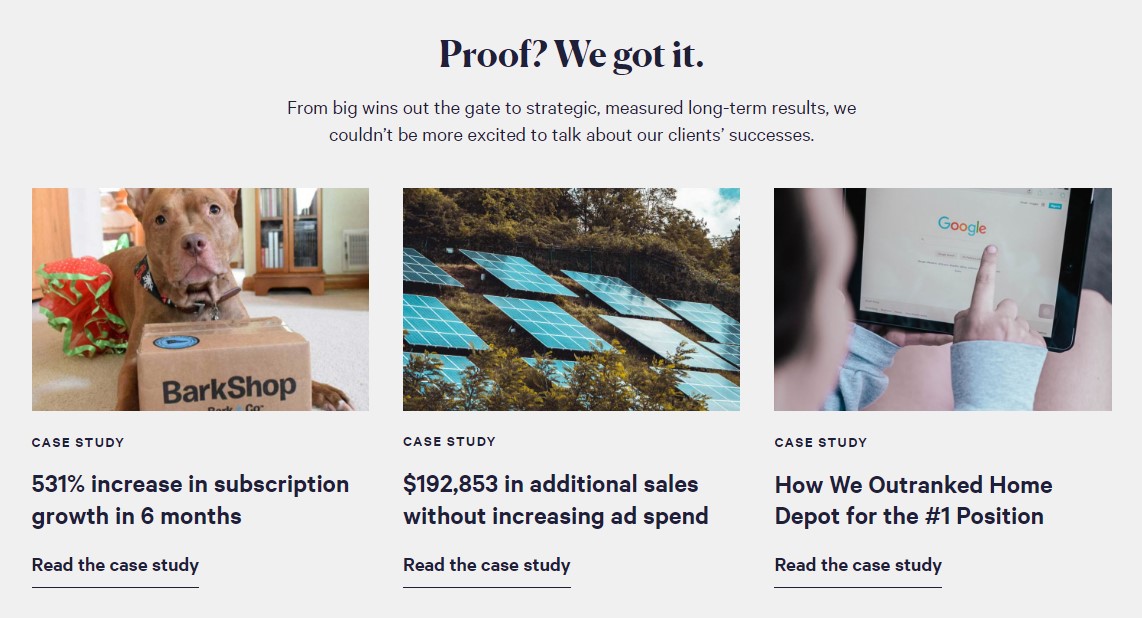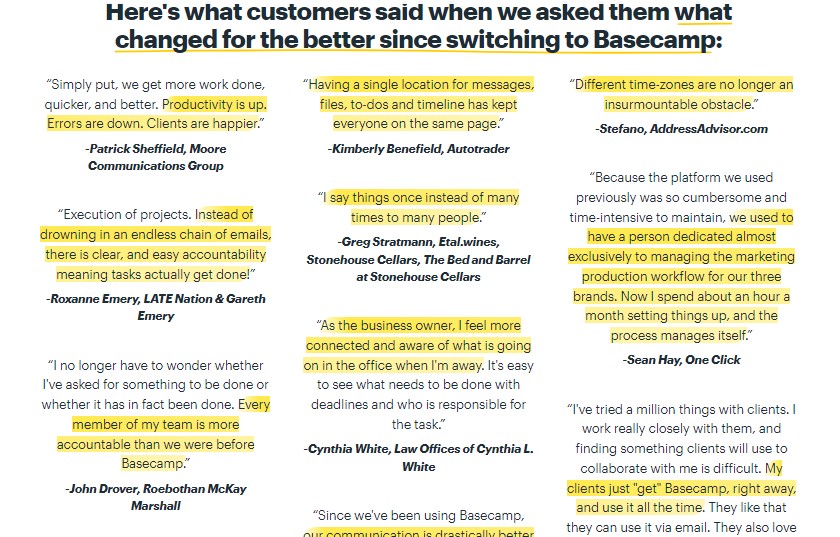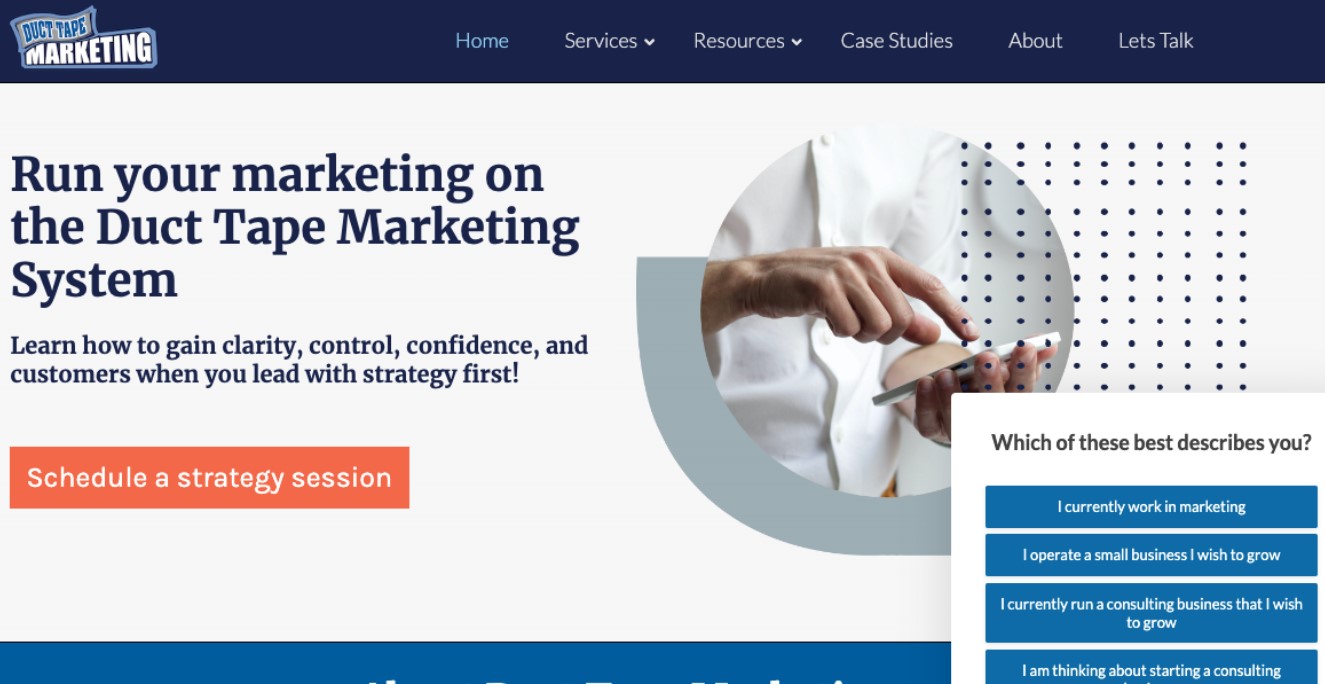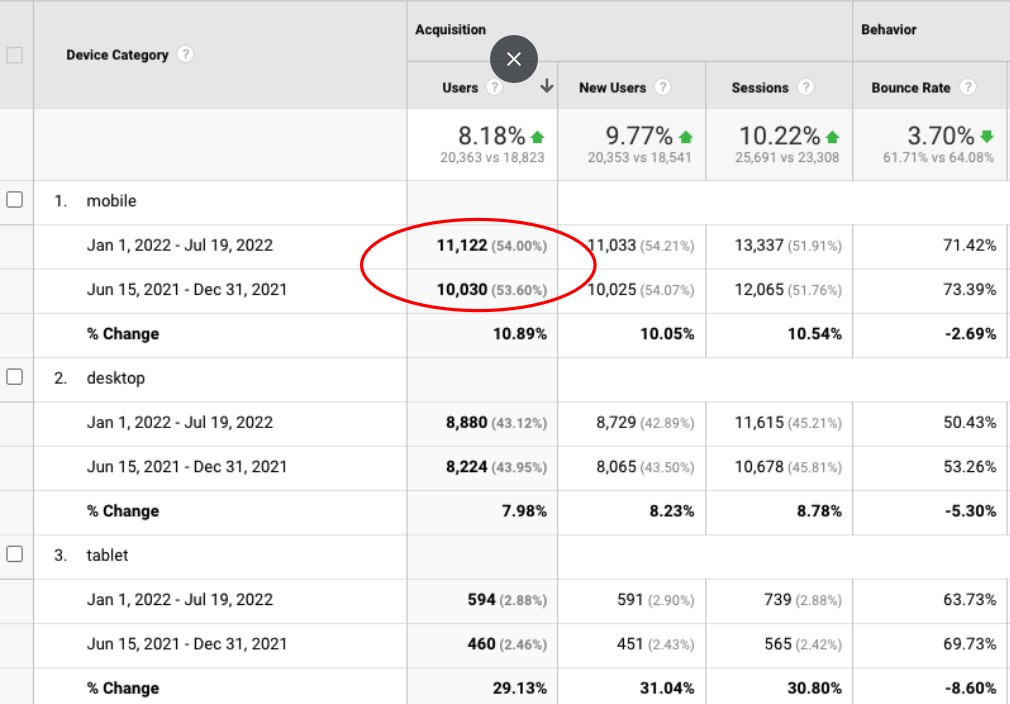
We talk to lots of potential clients who ask: Why can’t we just create content ourselves?
The truth is that most clients can create great content. They know their business, their industry, their customer — and many are pretty talented writers, too. We’ve often browsed potential client websites and found they’ve already published some awesome blog posts full of insight.
Why, then, would they want to hire Marketing Insider Group?
Well, because writing a great piece isn’t enough. To gain traction with Google’s algorithms (and thus gain visibility with your target audiences), you need to create great content every week — multiple times per week, really — all while ensuring you cover the right topics, optimize every article for search, and track your KPIs.
We do all of that for our clients, and our writers are at the center of it all, delivering smart content at scale without ever sacrificing quality. Every piece is built uniquely for the individual client company with their own customers in mind, designed to drive more traffic, leads, conversions, and sales.
In this article, we’re going to share the secret sauce — how our writers create so much content and make sure it really hits the mark. Whether you’re thinking about taking the leap to outsource your content creation (and wondering how it’s done) or looking to improve your own internal content writing process, this guide has the step-by-step instructions you need.
Quick Takeaways
- Templates and outlines help fight procrastination and make the content writing process approachable — especially when you’ve got multiple projects in queue.
- Read all top-ranked existing content on your keyword to get a sense of how to differentiate yours.
- It’s best to get your ideas out first. Write the article first and save the editing for when it’s done.
- Publishing platforms like WordPress help with SEO assessment and make final editing easier.
The MIG Content Writing Process: 5 Steps to Success
Step 1: Create Your Outlines
Start with templates
When you’ve got a lot of writing projects in the queue, wrapping your brain around them can be the first, most intimidating step. It’s the one that often leads writers and marketing teams to procrastinate about content creation — when there’s just so much to write, where do you start?
At Marketing Insider Group, our writers start with templates and outlines to make this part of the process more approachable. We use Google Docs as our platform, and here’s how it works:
- Every client gets their own folder for drafts in progress
- Those folders are kept together in one big “drafts” folder (each writer has a separate one for their client set)
- Within that folder is also a template document (pictured below) that you simply copy for each new article, move to the right client folder, and add the title and keywords
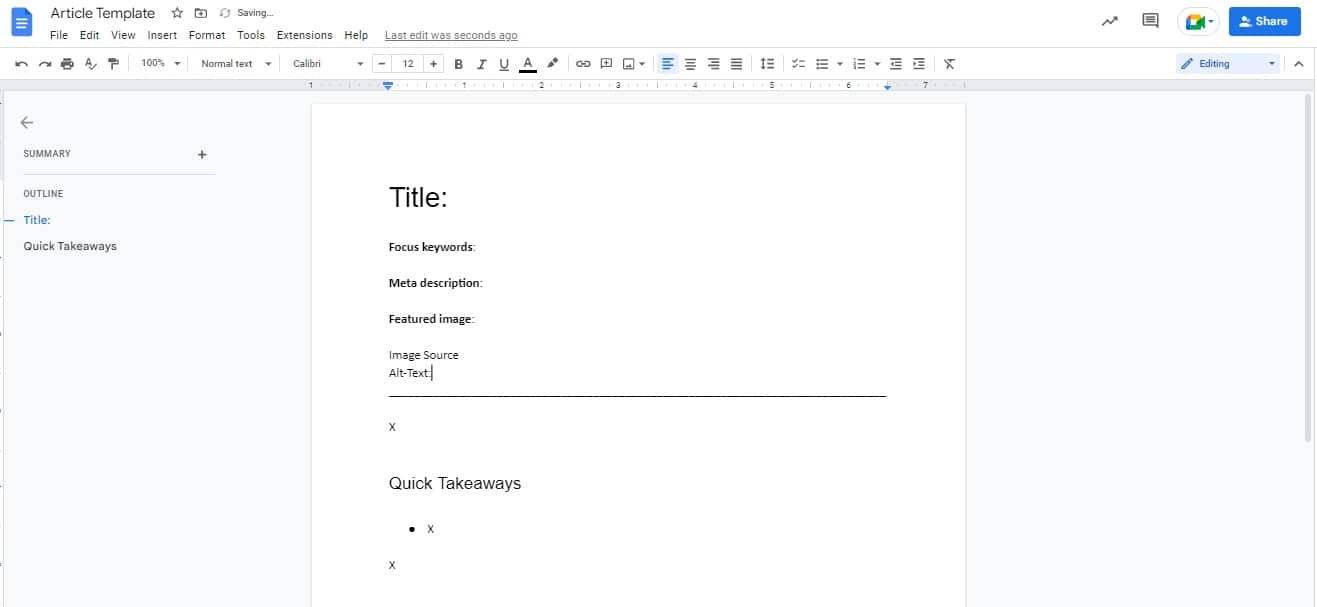
This way, rather than opening up a new document and facing the dreaded blank page and blinking cursor, you know you just have to copy your template and add the basics. Then you’ve technically started your article!
Download Marketing Insider Group’s Article Draft Template
Build your outlines
Next, it’s time to build an outline. To create an article that climbs the Google rankings, you need to know what already exists on the first search engine results page (SERP) for your keywords — and how you can make your version even better.
That requires actually reading the existing content and using it to outline your article. Here’s how we do it:
- Perform a Google search for both your target keyword and your article title
- Open every first-page result in a new tab (many will overlap across keyword and title)
- Speed-read every article. Slow down for the best ones (which aren’t necessarily the highest-ranked ones)
- As you read the existing content for your keyword, note important information and insights
Your tabs will look a little crazy at this point — opening 10-15 tabs in one window makes it crowded. That said, reading all of the top-ranked content on your keyword at one time gives you the clearest overarching sense of what needs to be covered in your own article.
Pro tip: When you’re reviewing existing content, click over to the “Images” tab on the SERP, where you’ll often find images with great statistics to include in your article. These may also lead you to more quality articles that may not have been on the first SERP.
After you’ve read the existing content for a keyword, you’ll have a pretty good idea of how you should structure your article. Take the notes you’ve recorded while you read and clean them up to create a fully fleshed-out article outline. Here’s where you want to be sure you add in your unique expertise and insight, too.
Step 2: Make a Plan
When you’ve got a handful of articles you’re preparing to write over a certain period of time, our recommendation is to fill your templates and complete your outlines for every article on your list — before you start doing any writing.
Here’s why: Time management is a key part of being able to deliver high-volume content while maintaining great quality. When you template and outline your content all at once, you can gain a sense of which articles may take more or less time, or which ones are just more approachable for you as the writer.
At Marketing Insider Group, our writers complete their outlines and then list the articles in the order in which they plan to write them. Then, build this list out into an actual schedule you can follow for getting all of the writing done.
This doesn’t need to be set in stone, but you should try to follow it as much as possible. Making a schedule and sticking to it will make you more productive over time, and for many writers it helps increase their bandwidth so they can take on additional projects (either articles for clients or passion projects of their own).
Step 3: Write (and Don’t Stop!)
By this step, you should have your templates and outlines completed as well as your project order and schedule for execution. Now the good stuff — it’s time to write!
Open the outline for your first article and pull up the existing content (yes, all of it from those first-page SERPs) so you can reference it as needed.
The biggest piece of advice from Marketing Insider Group writers: Write and write only. Leave the editing and much of the research for after you’re done.
For example: if you’re making a great point based on your knowledge and research, but need a stat to back it up, don’t stop to look up the stat in the moment. Keep your writing flow going by putting a quick “Insert Stat Here” note and highlight or bold it so you can go back later. Same thing goes for supporting images.
Similarly, resist the urge to edit while you’re writing if you can. It’s easy to spend upwards of an hour trying to get a single paragraph exactly right, when you could just keep writing and go back to it with a fresh brain later.
When you’re revisiting your article as the editor and not the writer (more on that next), you’ll find it much easier to make things read just as you want them to. For now, it’s all about getting the ideas on the page.
Step 4: Edit and Perfect
Once you finish your first draft, you can go back and polish things up. Start by looking up and adding any statistics, links, and images to support your content. Then revisit any parts of the article that need reworking or heavy edits. Finally, re-read the entire article to make sure it’s free of spelling and grammar errors.
Step 5: Add Internal Links and Optimize
Finally, optimize your article for SEO. Start with internal linking — it’s best to include 4-6 internal links to other content you’ve created throughout the article. When you do this consistently, you create a compounding effect that drives traffic and lifts rankings for your entire content library.
Once you’ve finished linking, check your article for other important SEO points, like keyword usage and sentence length. If you’re publishing on a platform like WordPress, drop the article there for an automated SEO assessment to make final edits easier.
Over to You
Writing takes time — no doubt about — but there are ways to do it at scale while keeping the quality excellent. Our writers at Marketing Insider Group have become pros at this over the years for companies of all sizes and every industry.
If you’re ready to level up your content strategy, check out our SEO Blog Writing Service or schedule a quick consultation to learn more about how we can help!
The post The MIG Content Writing Process: Quality Content at Scale appeared first on Marketing Insider Group.

